 "ttyymmnn" (ttyymmnn)
"ttyymmnn" (ttyymmnn)
03/22/2016 at 12:35 ē Filed to: planelopnik, planelopnik history
 14
14
 28
28
 "ttyymmnn" (ttyymmnn)
"ttyymmnn" (ttyymmnn)
03/22/2016 at 12:35 ē Filed to: planelopnik, planelopnik history |  14 14
|  28 28 |
Welcome to This Date in Aviation History , getting you caught up on milestones, important historical events and people in aviation from March 19 through March 22.
!!! UNKNOWN CONTENT TYPE !!!
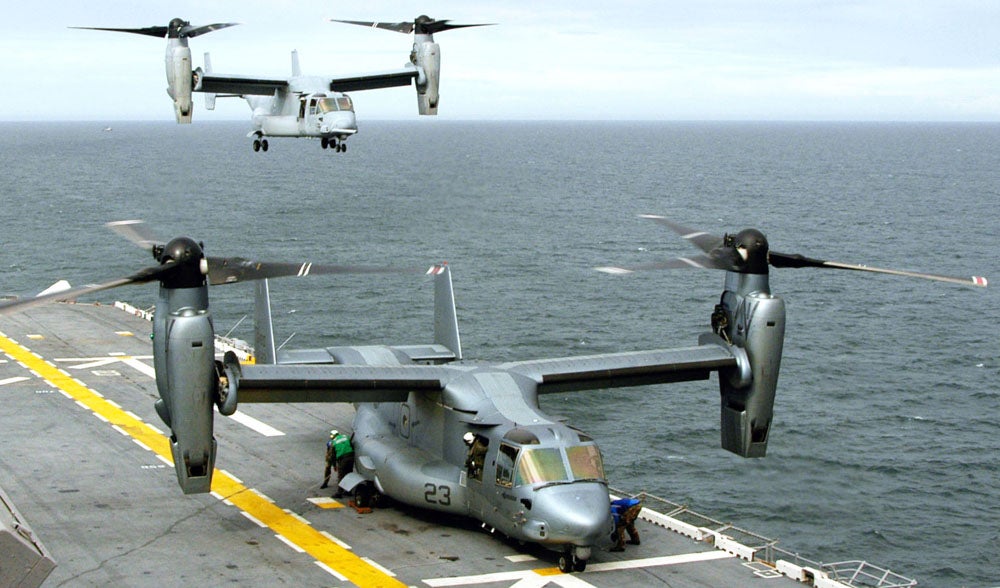
March 19, 1989 Ė The first flight of the Bell Boeing V-22 Osprey. Once the helicopter became operational following WWII, it was the only aircraft that was capable of taking off vertically and flying under its own power. But helicopters are limited by design to top speeds of only about 250 mph, speeds that are well under those that are possible by an airplane. For years, aircraft designers sought a way to create an aircraft that could take off vertically and then transition to horizontal flight. The problem of vertical or short takeoff flight has been solved for smaller fighters, first with the !!!error: Indecipherable SUB-paragraph formatting!!! , but they were never capable of carrying a useful payload of cargo or troops, though some !!!error: Indecipherable SUB-paragraph formatting!!! . But with the Osprey, technology finally matured enough to develop a large aircraft that could make a meaningful contribution to military logistics or civilian transport. The need for such an aircraft became painfully obvious following !!!error: Indecipherable SUB-paragraph formatting!!! , the disastrous attempt to rescue the hostages being held at the American embassy in Tehran in 1980. In 1981, the Department of Defense began the Joint-service Vertical take-off/landing Experimental program (JVX) to pursue an aircraft that could take off and land vertically while carrying troops. The US Navy and Marine Corps were the lead branches in the development of the JVX based on their specific operational needs, and !!!error: Indecipherable SUB-paragraph formatting!!! partnered with !!!error: Indecipherable SUB-paragraph formatting!!! to produce six prototypes of the Osprey. Bell would produce the wings, engines and related systems, tail surfaces and aft ramp, while Boeing manufactured the fuselage, cockpit and avionics. Following testing, full-scale production began in 1986. As with any modern aircraft built entirely from scratch, cost overruns began to plague the Osprey, as well as a number of high-profile training accidents. Many believed that the Osprey was an inherently dangerous aircraft, particularly in the case of engine failure. But through a system of interconnected drive shafts, one engine can drive both rotors. Pilots also have to understand exactly what the Osprey is. !!!error: Indecipherable SUB-paragraph formatting!!! to Bellís chief Osprey test pilot Bill Leonard, ďOne of the biggest problems weíve had in the [pilot] community is getting past the idea that itís a helicopter that flies fast. Itís not. Itís an airplane that hovers. And if you fly the airplane like a helicopter, yes, itís very difficult to fly as a helicopter. And if you do that, you have a very good chance of having a problem with controllability because of the way the aircraft operates. If you fly it like an airplane and you are willing to take the time to understand the capabilities of it in helicopter, itís a very, very easy airplane to fly.Ē Marine Corps V-22s were first deployed to Afghanistan in 2009 where they took part in their first combat missions and continue to see service there today. They have also been flown on relief missions, and the Navy plans to use the Osprey to replace the !!!error: Indecipherable SUB-paragraph formatting!!! for Carrier Onboard Delivery (COD). The Osprey entered service with the US Air Force in 2006 for use in special operations, with plans future use as a combat search and rescue platform. (US Navy photo)
!!! UNKNOWN CONTENT TYPE !!!
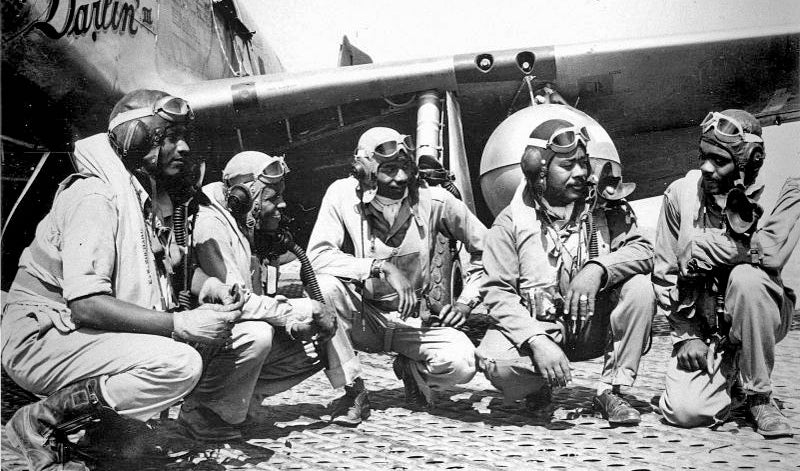
March 19, 1941 Ė The 99th Pursuit Squadron, better known as the Tuskegee Airmen, is constituted. If one were to look at photographs of WWII, it would be relatively easy to reach the conclusion that WWII was very much a white manís war. However, when the war began, 2.5 million African American men registered for the draft, and at least 1 million went on to serve either as draftees or enlisted men in all the branches of the military. However, with a few notable exceptions, the overwhelming majority were relegated to support roles such as cooks or drivers. The US military was still a segregated organization, and blacks served in segregated units. Before the formation of the !!!error: Indecipherable SUB-paragraph formatting!!! , no African American had ever served as a military pilot. By 1940, according to the US census, there were only 124 black pilots in the US. But in 1939, Congress passed the Civilian Pilot Training Act, and !!!error: Indecipherable SUB-paragraph formatting!!! in Alabama started training pilots as part of the !!!error: Indecipherable SUB-paragraph formatting!!! . In January 1941 the War Department announced plans to create a ďNegro pursuit squadronĒ to be manned by graduates of the Tuskegee program, and the 99th Pursuit Squadron was activated on March 22, 1941 at !!!error: Indecipherable SUB-paragraph formatting!!! in Illinois with 271 enlisted men trained in ground support. Pilot training for the 99th began in June 1941. Initially, the squadron included 47 officers and 429 enlisted men, but the unit was still segregated, and even the construction contract for the base was awarded to an African American contractor. By April 1942, the 99th was considered ready for combat, and the squadron was sent to North Africa to be part of the 33rd Fighter Group. The Tuskegee Airmen, also called the Red Tails due to the distinctive red paint on the empennage of their !!!error: Indecipherable SUB-paragraph formatting!!! flew their first combat mission against a strategic island in the Mediterranean Sea in the run up to the !!!error: Indecipherable SUB-paragraph formatting!!! . During the !!!error: Indecipherable SUB-paragraph formatting!!! , the 99th provided close air support for the US 5th Army at Foggia and the !!!error: Indecipherable SUB-paragraph formatting!!! , and for French and Polish forces near Cassino. On July 2, 1943, 1st Lt. Charles Hall of the 99th claimed the first enemy aircraft destroyed by a Tuskegee Airman when he downed a German !!!error: Indecipherable SUB-paragraph formatting!!! over southwestern Sicily. The 99th continued to escort bombers and provide air cover during the Italian campaign, and the unit was awarded the first of three !!!error: Indecipherable SUB-paragraph formatting!!! during the period June-July 1943 for its actions during the landings on Sicily. The exemplary service of the Tuskegee Airmen, along with that of other African American servicemen, helped bring about the integration of the US military on July 26, 1948, when President Harry S Truman issued !!!error: Indecipherable SUB-paragraph formatting!!! stating in part that ďthere shall be equality of treatment and opportunity for all persons in the armed forces without regard to race, color, religion, or national origin.Ē (US Air Force photo)
!!! UNKNOWN CONTENT TYPE !!!
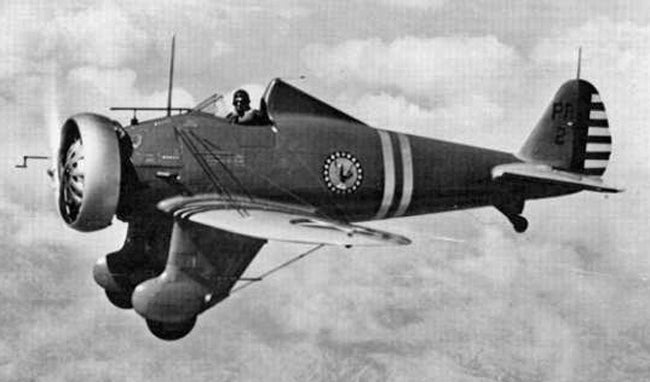
March 20, 1932 Ė The first flight of the Boeing P-26 Peashooter. In the early development of the fighter plane, most designs featured a frame of wood or metal tubes covered by fabric. The Germans, however, were the first to produce an all-metal monoplane as early as 1915 with the !!!error: Indecipherable SUB-paragraph formatting!!! , but it took some time for that design concept to take hold. And while the Boeing P-26 wasnít the first metal monoplane to be considered by the US Army Air Corps, it was the first to enter production and enter service. Development of the P-26 began in 1931 with an internally funded Boeing project known as the Model 248. For that aircraft, the Army supplied the engines and instruments, while Boeing built the airframe. The 248, while it was a monoplane, still employed fixed landing gear and external wire bracing to keep the wings from buckling. But with its small wings, the Model 248 had an unacceptably high landing speed, which led to a number of crashes. With its short nose, it had a tendency to pitch forward on landing, injuring or killing the pilot. These problems were addressed by the addition of flaps to lower the landing speed, and the addition of a raised headrest to protect the pilot should the plane flip over. Two different engines were used in the P-26A and P-26B, before the Army settled on a carbureted !!!error: Indecipherable SUB-paragraph formatting!!! radial with !!!error: Indecipherable SUB-paragraph formatting!!! to help reduce drag. The USAAC ordered 111 P-26As, followed by orders for the improved B and C models, and took delivery of the first Peashooters in 1934. The carbureted engines of the latter models were then modified to accept fuel injection. At the time of its introduction, the Peashooter was the fastest fighter in the American inventory. But rapid advances in aircraft design in the 1930s soon rendered the P-26 somewhat of an anachronism, as newer fighters such as the !!!error: Indecipherable SUB-paragraph formatting!!! and !!!error: Indecipherable SUB-paragraph formatting!!! were just three years away, fighters with enclosed cockpits, retractable landing gear and !!!error: Indecipherable SUB-paragraph formatting!!! . Nevertheless, the P-26 proved easy to fly, and it remained in service until the outbreak of WWII. Though the Peashooter never saw combat with American forces, fighters exported to China saw action against the Japanese in 1937, where they were responsible for downing a handful of bombers, and members of the Philippine Army Air Corps had limited success against Japanese fighters in 1941. A total of 141 Peashooters of all variants were produced, and it was the last fighter developed by Boeing until the company acquired McDonnell Douglas in 1997. (US Air Force photo)
!!! UNKNOWN CONTENT TYPE !!!
Short Take Off
!!! UNKNOWN CONTENT TYPE !!!
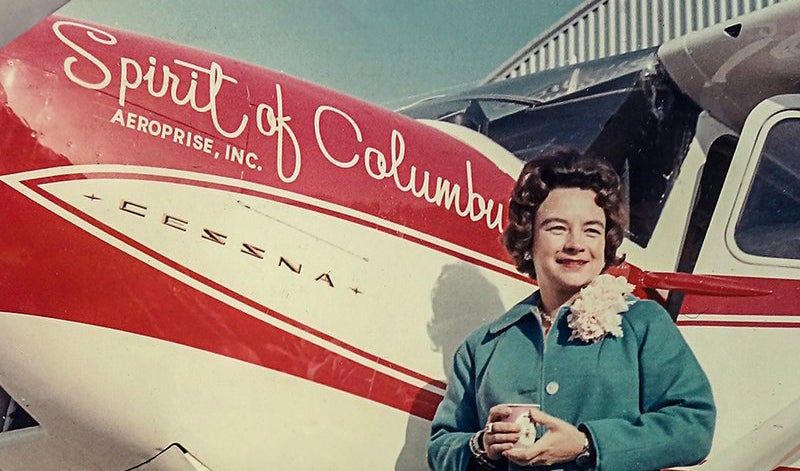
March 19, 1964 Ė Geraldine Mock becomes the first woman to fly around the world. Flying a single-engine !!!error: Indecipherable SUB-paragraph formatting!!! (N1538C) named Spirit of Columbus , Mock took off on March 19 from Columbus, Ohio and completed the flight on April 17, taking 29 days. The flight included 21 stopovers, and covered 22,860 miles. In recognition of this feat, Mock was awarded the !!!error: Indecipherable SUB-paragraph formatting!!! from the !!!error: Indecipherable SUB-paragraph formatting!!! in 1965. She later published a book about her trip in 1970 titled Three-Eight Charlie . Mock also holds numerous speed and distance records for a woman pilot, and was the first to fly across the Pacific Ocean in a single-engine aircraft and the first to cross both oceans. Her Cessna now resides at the Smithsonianís !!!error: Indecipherable SUB-paragraph formatting!!! . (Photo by Sheldon Ross/Columbus Dispatch via !!!error: Indecipherable SUB-paragraph formatting!!! )
!!! UNKNOWN CONTENT TYPE !!!
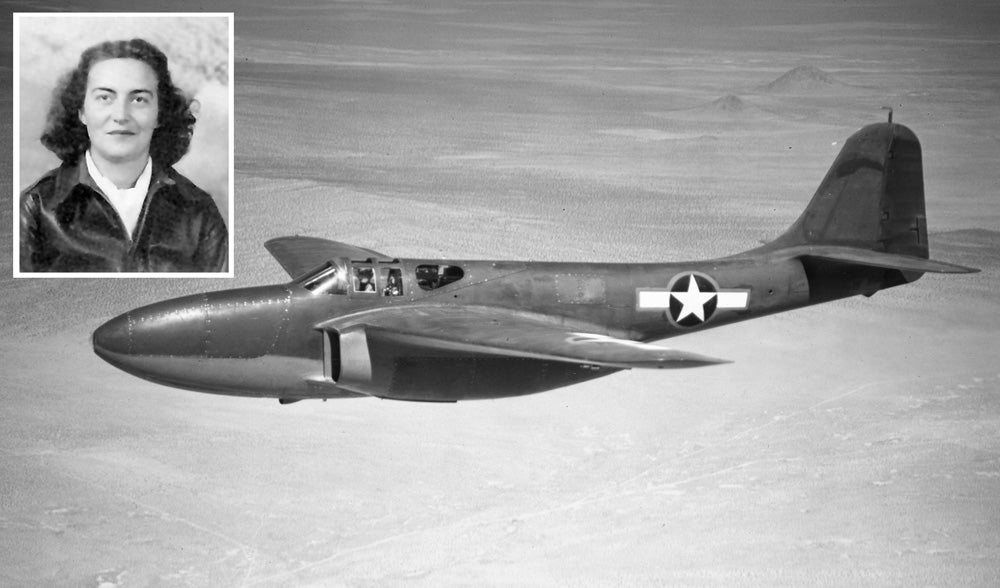
March 20, 2008 Ė The death of Ann Baumgartner, the first American woman to fly a jet fighter.
Born in Augusta, Georgia in 1918, Baumgartner was a pilot with the
!!!error: Indecipherable SUB-paragraph formatting!!!
(WASP) program, which was tasked with ferrying new aircraft from factories in the US to points of embarkation around the country. In February 1944, Baumgartner transferred to Wright Field in Ohio on a temporary assignment to test aeromedical equipment, eventually becoming assistant operations officer for the WASPs at Wright Field. On October 14, 1944, Baumgartner flew the
!!!error: Indecipherable SUB-paragraph formatting!!!
, Americaís first jet fighter, as part of her testing duties. Following the disbanding of the WASPs in 1944, Baumgartner continued to work as a flight instructor for United Airlines.
(P-59 photo via US Air Force; Baumgartner photo author unknown)
!!! UNKNOWN CONTENT TYPE !!!
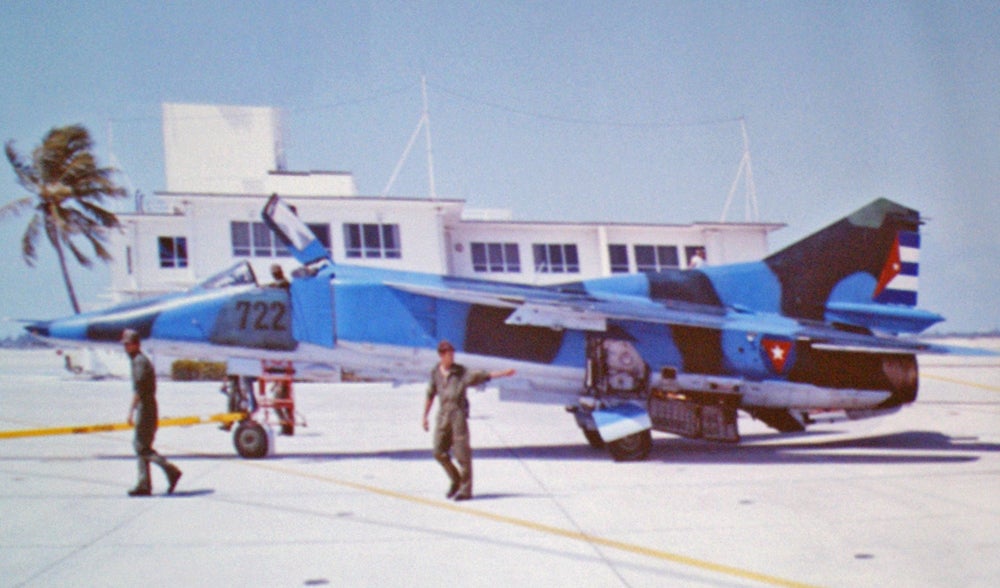
March 20, 1991 Ė Cuban Air Force pilot Maj. Orestes Lorenzo Perez defects to the US flying his fighter to NAS Key West in Florida. While on a training mission, Perez flew his !!!error: Indecipherable SUB-paragraph formatting!!! to Florida and, to the embarrassment of the US Air Force, defense radar failed to pick up the airplane and no fighters were scrambled. The MiG was eventually returned to Cuba, and Perez was given asylum in the US. The following year, Perez flew back to Cuba in a !!!error: Indecipherable SUB-paragraph formatting!!! and landed on a busy highway to pick up his wife and two sons who had been told that he would be coming for them. Orestes then flew back to the US, where his family was also granted asylum. (Photo from Orestes Collection via !!!error: Indecipherable SUB-paragraph formatting!!! )
!!! UNKNOWN CONTENT TYPE !!!
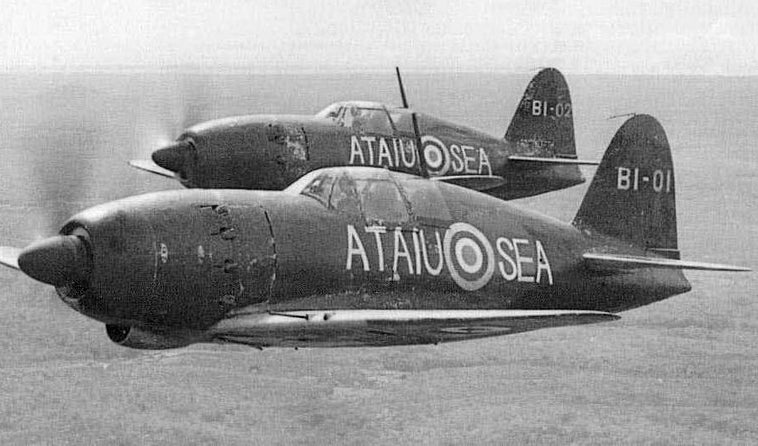
March 20, 1942 Ė The first flight of the Mitsubishi J2M, nicknamed Raiden (Thunderbolt) and given the Allied reporting name Jack. The Raiden was designed by !!!error: Indecipherable SUB-paragraph formatting!!! , who had also designed the !!!error: Indecipherable SUB-paragraph formatting!!! , and was built to be a local defense interceptor to protect Japan from American bombers. The J2M first saw action in 1944 during the !!!error: Indecipherable SUB-paragraph formatting!!! , but its lack of a turbocharger meant that it had difficultly engaging the high-flying !!!error: Indecipherable SUB-paragraph formatting!!! , though its armament of four cannons was potent, and it was occasionally effective in diving attacks. A total of 671 Raidens were built, and it was retired at the end of the war. (Captured J2Ms following the war, UK Government photo)
!!! UNKNOWN CONTENT TYPE !!!
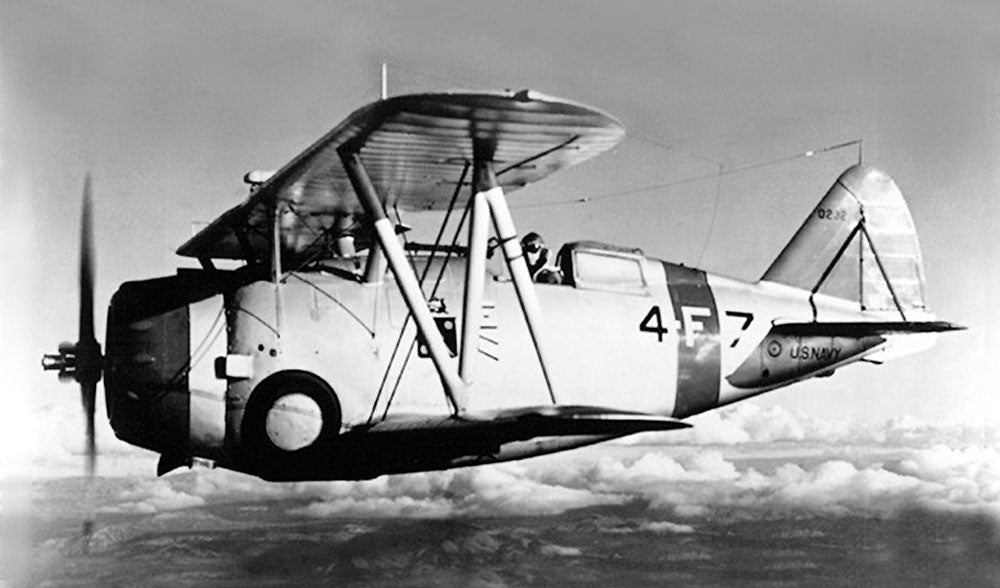
March 20, 1935 Ė The first flight of the Grumman F3F, the last biplane fighter delivered to the US Navy. Designed to replace the !!!error: Indecipherable SUB-paragraph formatting!!! , the F3F entered service in 1936, but was removed from frontline service in 1941 at the beginning of the war. It was replaced by the !!!error: Indecipherable SUB-paragraph formatting!!! , though a number of F3Fs continued to fly in a training role. The F3F also served the US Army Air Force as a trainer with the designation UC-103. While the F3F performed the bulk of its service before the war, it would form the developmental basis for the !!!error: Indecipherable SUB-paragraph formatting!!! , the mainstay Naval fighter in the early years of WWII. (US Navy photo)
!!! UNKNOWN CONTENT TYPE !!!
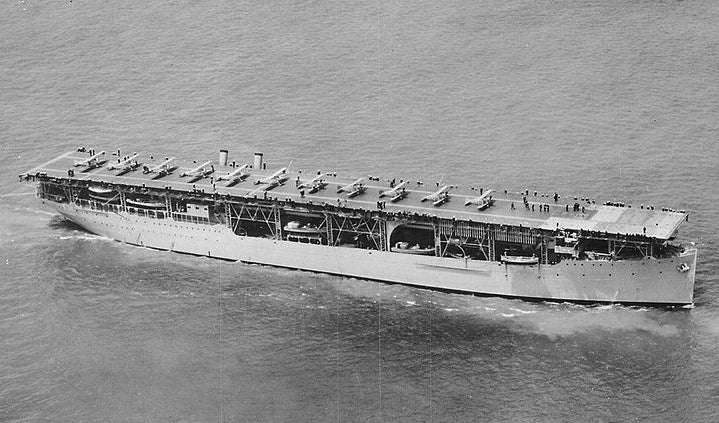
March 20, 1922 The US Navy commissions the USS Langley (CV-1), its first aircraft carrier. Converted from the collier USS Jupiter , Langley was also the US Navyís first !!!error: Indecipherable SUB-paragraph formatting!!! . Langley was converted at the Navy Yard in Norfolk, Virginia and named after American aviation pioneer !!!error: Indecipherable SUB-paragraph formatting!!! , and the first plane to fly from her deck was a !!!error: Indecipherable SUB-paragraph formatting!!! flown by Lt. Virgil Griffin on October 17, 1922. After serving off the California coast for 12 years, Langley served was converted to a seaplane tender (AV-3) and served in WWII but had to be scuttled following an attack by Japanese dive bombers on February 27, 1942. (US Navy photo)
!!! UNKNOWN CONTENT TYPE !!!
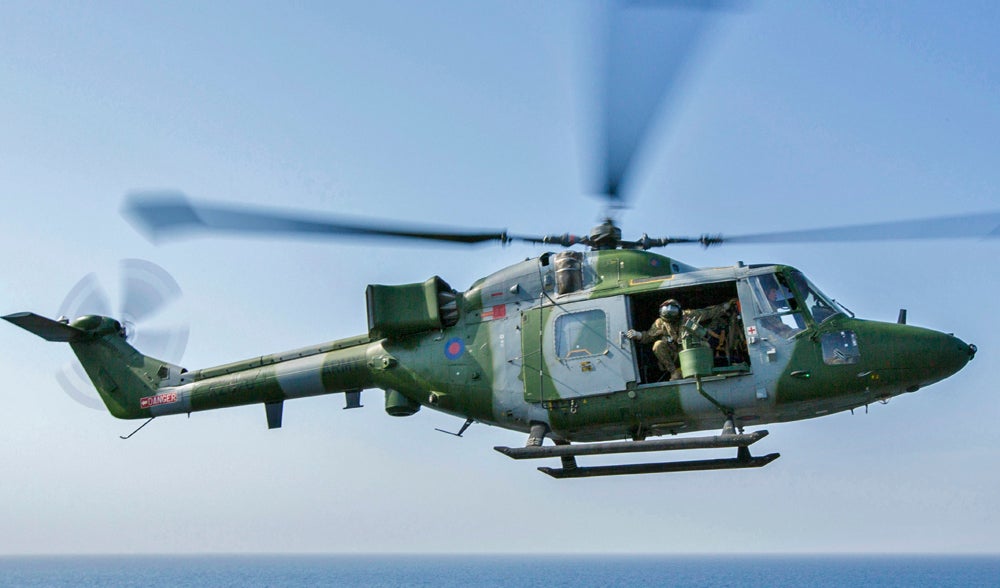
March 21, 1971 Ė The first flight of the Westland Lynx, a multi-purpose helicopter designed and built by Westland Helicopters in England as a replacement for the !!!error: Indecipherable SUB-paragraph formatting!!! and !!!error: Indecipherable SUB-paragraph formatting!!! . Originally built as a utility helicopter for both civilian and military use, the Lynx was further developed into armed gunship and antisubmarine warfare (ASW) variants. The Lynx entered service with the British Army in 1971 and currently serves with the Army and Royal Navy, with export versions operated by the French Navy and German Navy. Currently in production, more than 450 have been built so far, and they have seen action in the Iraq War and in Afghanistan. (US Navy photo)
!!! UNKNOWN CONTENT TYPE !!!
Recent Aviation History Posts
!!! UNKNOWN CONTENT TYPE !!!
!!! UNKNOWN CONTENT TYPE !!!
!!! UNKNOWN CONTENT TYPE !!!
!!! UNKNOWN CONTENT TYPE !!!
!!! UNKNOWN CONTENT TYPE !!!
If you enjoy these Aviation History posts, please let me know in the comments. And if you missed any of the past articles, you can find them all at
!!!error: Indecipherable SUB-paragraph formatting!!!
.
!!! UNKNOWN CONTENT TYPE !!!
 MonkeePuzzle
> ttyymmnn
MonkeePuzzle
> ttyymmnn
03/22/2016 at 12:45 |
|
1989! wow, did not think it was so long ago for the V-22. In my opinion itís one of the only real innovations in recent aviation history. And, a hell of a good looking aircraft. Itís like a toy straight out of my 80s GI Joe play sets!
 ttyymmnn
> MonkeePuzzle
ttyymmnn
> MonkeePuzzle
03/22/2016 at 12:48 |
|
Itís development has been a long strange trip. And Iíve read comments by some service members who think itís the devilís aircraft and would never fly in it to save their lives. And there are others who say itís the greatest thing since sliced bread. Either way, itís an amazing technological achievement, and I think its best days are yet to come.
 HammerheadFistpunch
> ttyymmnn
HammerheadFistpunch
> ttyymmnn
03/22/2016 at 12:48 |
|
Just a reminder of how old the osprey is
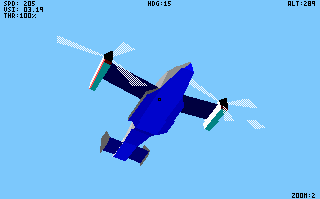
This is LHX attack chopper from 1990. So think about how this just entering a real service status now plane was designed.
 MonkeePuzzle
> ttyymmnn
MonkeePuzzle
> ttyymmnn
03/22/2016 at 12:54 |
|
are Ann and Felix Baumgartner related? google was less than helpful.
 ttyymmnn
> HammerheadFistpunch
ttyymmnn
> HammerheadFistpunch
03/22/2016 at 12:54 |
|
Twenty years to first operational deployment of the V-22. The F-35 was chosen the winner of the JSF competition in 2001, with the first production Lightning II rolling out in 2006. Is Congress willing to give the F-35 ten more years? They donít really have a choice, as weíre pretty much all in right now. But folks need to remember that these are both entirely new, clean sheet designs of enormous complexity. It takes time to get them to work right.
 MonkeePuzzle
> ttyymmnn
MonkeePuzzle
> ttyymmnn
03/22/2016 at 12:55 |
|
the bodyís design looks old enough that this plane simply looks like itís missing propellers/engines
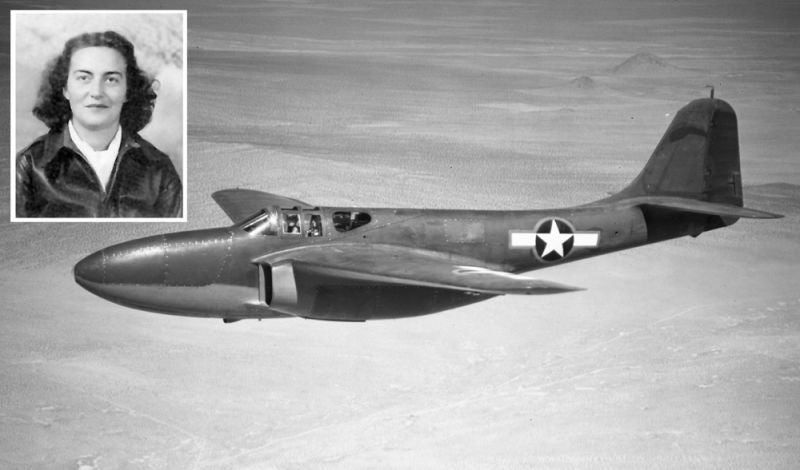
 ttyymmnn
> MonkeePuzzle
ttyymmnn
> MonkeePuzzle
03/22/2016 at 12:55 |
|
I doubt it. Felix is Austrian (or German), Ann was American. But there may be some relationship way back in the Old Country. Who knows?
 MonkeePuzzle
> ttyymmnn
MonkeePuzzle
> ttyymmnn
03/22/2016 at 12:56 |
|
the cuban defector story is interesting, but the return in a cessna really bumps it up a notch!
 Stapleface
> ttyymmnn
Stapleface
> ttyymmnn
03/22/2016 at 12:58 |
|
I knew Iíve seen pictures/videos of the Osprey in combat duties, but I was never aware it was ever actually approved. The DOD seemed to really not want to have this aircraft in service.
 HammerheadFistpunch
> ttyymmnn
HammerheadFistpunch
> ttyymmnn
03/22/2016 at 12:58 |
|
And I finally understand all that in regards to what it takes (in time) to flesh out the bugs on a complicated system like that, I just wanted to reframe the perspective of what that time frame felt like to me (I had LHX attack chopper as a kid). Seems like SOOO long ago, I canít even imagine that more than 2/3rds of the original staff that started work on it got to see it to the end.
 ttyymmnn
> MonkeePuzzle
ttyymmnn
> MonkeePuzzle
03/22/2016 at 12:58 |
|
That was the design ethos of the era. Slap turbojets on a regular plane and go flying. We hadnít yet captured the German data on swept wing aircraft. Interestingly, the Airacomet was fitted with a fake wooden propeller when it was moved for testing to mask its true power source.
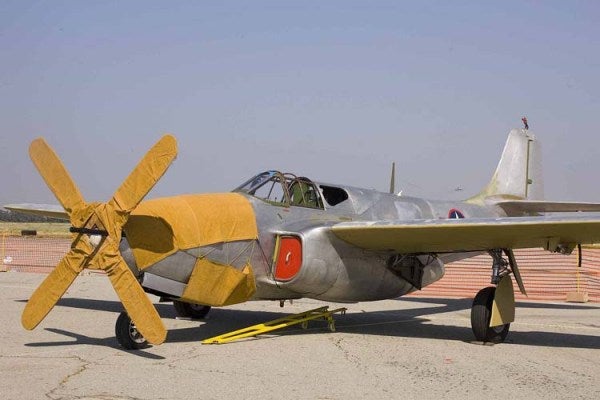

 MonkeePuzzle
> ttyymmnn
MonkeePuzzle
> ttyymmnn
03/22/2016 at 12:59 |
|
that is so awesome! low tech anti-espionage
 McMike
> ttyymmnn
McMike
> ttyymmnn
03/22/2016 at 13:00 |
|
The following year, Perez flew back to Cuba in a Cessna 310 and landed on a busy highway to pick up his wife and two sons who had been told that he would be coming for them.
Awesome.
He was on the ground for less than a minute.
Reminds me of the Cannonball Run Beer stop.
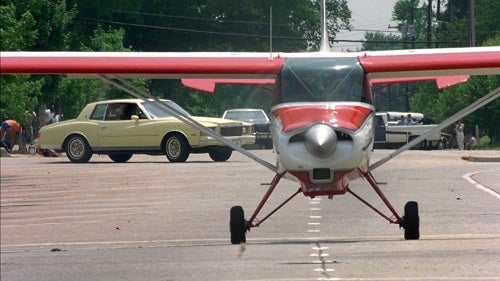
ďIíll be right out, donít bother to park!Ē
 MonkeePuzzle
> HammerheadFistpunch
MonkeePuzzle
> HammerheadFistpunch
03/22/2016 at 13:01 |
|
lol, and/or scary!
 ttyymmnn
> Stapleface
ttyymmnn
> Stapleface
03/22/2016 at 13:02 |
|
I think the DOD really wanted to have it in service, it just took a long time to get there. It earned a reputation, whether warranted or not, of being a dangerous aircraft. But I think it took a bit of work, a few lives (unfortunately), and a reframing of the pilotís attitude on how to fly it to make it work. Read the linked article about how to fly it. Itís a fascinating read. Proponents say that the V-22 is now safer than helicopters, but they still wonít let the POTUS fly in one. Theyíre happy to fly his staff and the press, though.
 ttyymmnn
> MonkeePuzzle
ttyymmnn
> MonkeePuzzle
03/22/2016 at 13:02 |
|
The guy has balls, no doubt.
 MonkeePuzzle
> ttyymmnn
MonkeePuzzle
> ttyymmnn
03/22/2016 at 13:02 |
|
fighter pilot, balls are assumed
 ttyymmnn
> McMike
ttyymmnn
> McMike
03/22/2016 at 13:04 |
|
Thanks for the news story. Awesome animation, btw.
 Margin Of Error
> ttyymmnn
Margin Of Error
> ttyymmnn
03/22/2016 at 13:09 |
|
Relevant, but donít take it personal
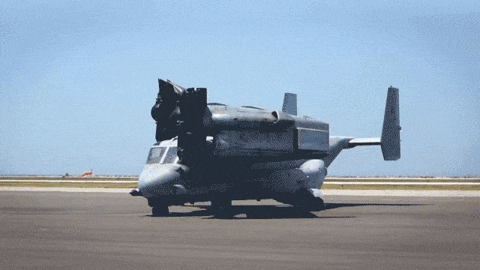
 Smallbear wants a modern Syclone, local Maple Leafs spammer
> ttyymmnn
Smallbear wants a modern Syclone, local Maple Leafs spammer
> ttyymmnn
03/22/2016 at 13:10 |
|
The Red Tail Angels were incredible. ~25 bombers lost in ~180 escort missions. 155 missions where they didnít lose A SINGLE BOMBER (and thatís just statistically speaking, there could have been several lost on one ďbad dayĒ mission, which makes the record even more impressive). I donít know how many bombers were in a typical mission. Doesnít matter, these guys were amazing.
 RallyWrench
> ttyymmnn
RallyWrench
> ttyymmnn
03/22/2016 at 13:15 |
|
A lot of really interesting events this week, especially with the Tuskeegee program and Major Perez. I didnít know the Osprey had such a long gestation from first flight to deployment, thatís even more disappointing than I thought.
 Birddog
> ttyymmnn
Birddog
> ttyymmnn
03/22/2016 at 13:23 |
|
That animation has me in stitches.
 ttyymmnn
> Smallbear wants a modern Syclone, local Maple Leafs spammer
ttyymmnn
> Smallbear wants a modern Syclone, local Maple Leafs spammer
03/22/2016 at 13:29 |
|
I find it interesting that the Tuskegee Airmen fought so hard and so well for a country that treated them like second class citizens. I remember reading in Stephen Ambroseís D-Day how African American soldiers were forced to eat out of the back door of a restaurant, while German POWs shipped back to the US were allowed to eat in the dining room. And then there was the 442nd Infantry Regiment , which was made up of Nisei , children born in the US to Japanese immigrants, many of whom were interred during WWII. The 442nd was the most decorated unit in US military history. Of the 14,000 men who rotated through the unit, nearly 9,500 earned the Purple Heart. Why would they fight so hard for a country that had imprisoned their families? There is a certain honor in their actions, and those of the Tuskegee Airmen, that is exemplary, a calling that transcends politics and racism and is truly inspirational.
 ttyymmnn
> Margin Of Error
ttyymmnn
> Margin Of Error
03/22/2016 at 13:30 |
|
Personal? Not at all. Thatís funny!
 ttyymmnn
> Birddog
ttyymmnn
> Birddog
03/22/2016 at 13:31 |
|
1989, yo. Weíve come to expect cell phone video of every major event. Or CCTV footage. We barely had camcorders back then.
 Smallbear wants a modern Syclone, local Maple Leafs spammer
> ttyymmnn
Smallbear wants a modern Syclone, local Maple Leafs spammer
> ttyymmnn
03/22/2016 at 13:33 |
|
The only thing I can imagine is they had something to prove.
Or, as victims of persecution themselves perhaps had a more personal view of the Nazi system?
Either way, we canít do anything but respect them for performing so well (performing at all, actually) under those conditions.
 Birddog
> ttyymmnn
Birddog
> ttyymmnn
03/22/2016 at 13:36 |
|
True! Home camcorders were only about 6 years old then.
Iím pretty sure video games had better animation than that video back then though.
 user314
> MonkeePuzzle
user314
> MonkeePuzzle
03/22/2016 at 21:27 |
|
Scary, isnít it? The ATF fly-off that led to the F-22 and the V-22's first flight both happened when I was in grade school .